Whether dining with friends or family, pizza is always sure to satisfy—and homemade pizza even more so. But how long does it take to bake a pizza? We've scoured all of our culinary resources to answer this question, and here's what you need to know:
The amount of time to cook a pizza will depend on the style and size of the pizza you're making as well as the oven temperature. Here are averages for a few different styles of pizza in a standard home oven:
- Neapolitan or thin New York-style pizza: 6-8 minutes at 500º
- New York-style pizza: 12-15 minutes at 500º
- Deep-dish pizza: 20-30 minutes at 425º
- Frozen pizza: follow box instructions, typically 15-25 minutes at 400º
There's more to say about timing your pizza perfectly. In this article, we'll take a deeper look at how to check your pizza for doneness, including deep dish pizzas, and how to finish off an underdone pizza. We'll also see how a convection oven can affect your bake, what pizzas to make in the microwave, and more! Keep reading to see it all.
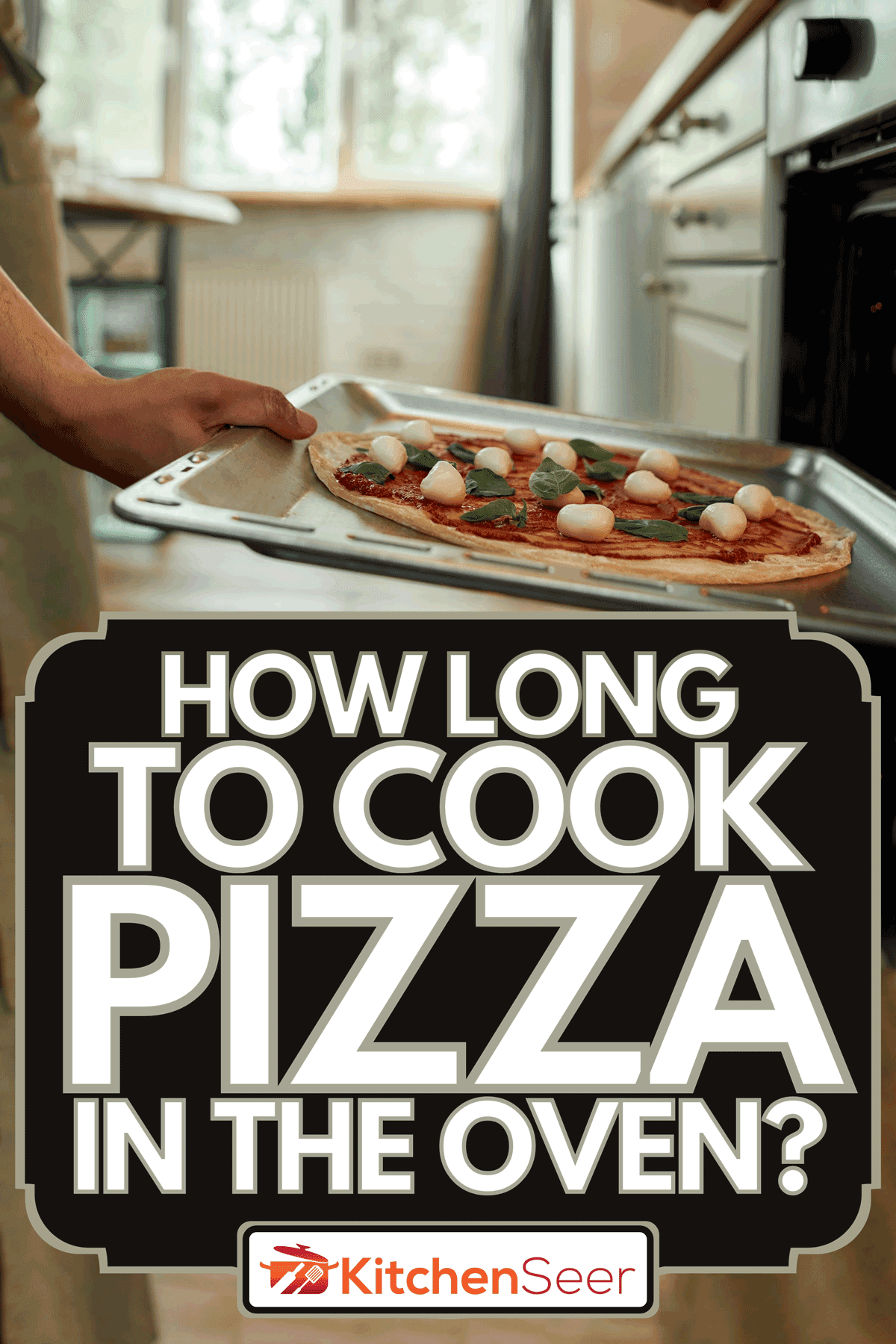
How long to cook a pizza in a convection oven
Convection ovens have become more common in households in recent years. By circulating hot air in the oven, these can cook many dishes more quickly and evenly.
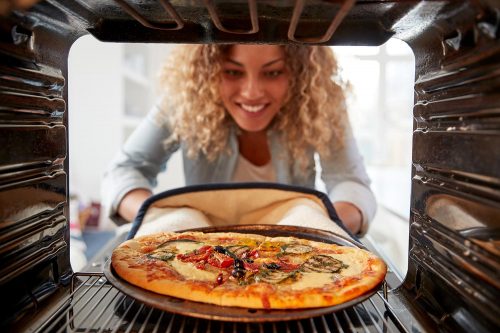
For cooking with a convection oven, you'll want to turn down the heat by 25º F and reduce the time by 25%. In a convection oven, the list from before would look like this:
- Neapolitan or thin New York-style pizza: 4-6 minutes at 475º
- New York-style pizza: 9-12 minutes at 475º
- Deep-dish pizza: 15-24 minutes at 400º
- Frozen: 12-19 minutes at 375º
Do convection ovens make better pizzas?
You may notice more differences besides temperature and time when cooking with a convection oven, especially when cooking on a pizza stone.
One potential issue that can arise is that the top of the pizza may cook faster than the bottom. If this is the case, you can put the stone on a lower rack or simply use the conventional oven setting.
Another difference you may find is that the crust may take on a more uniform color. Traditional pizza shops often pride themselves on the dark bubbles and blisters that form on their crust, but a more consistent crust isn't necessarily a good or a bad thing.
Try both settings and see which makes the pizza that you prefer. After all, you are the presidents of your pizzas, and what's best isn't about tradition or novelty. It's what makes you and your dining companions happiest.
Can you make pizza in the microwave?
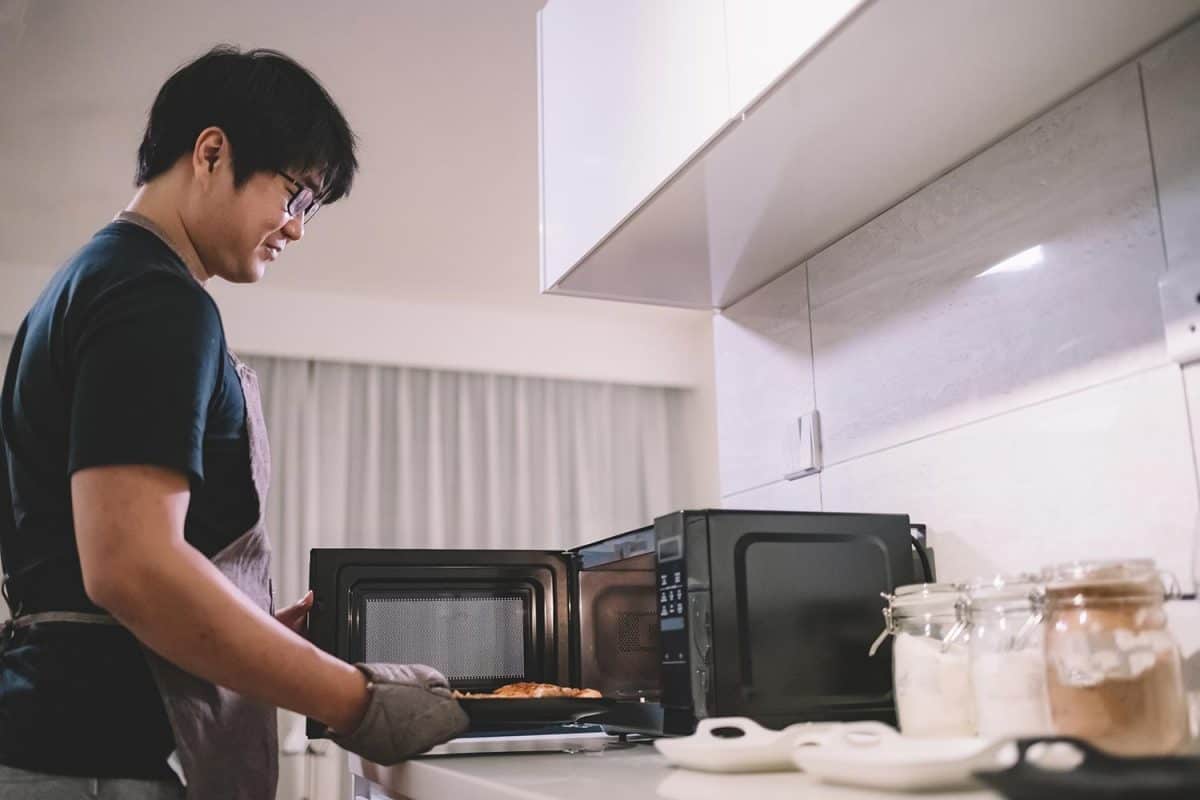
Microwaves are the ultimate convenience appliance. Small and powerful, they can cook faster than just about anything besides the sun. But can you make a pizza in a microwave?
The answer is both yes and no. Most typical pizza recipes and frozen pizzas won't work well in a microwave. The dough may turn rubbery or soggy and will likely cook unevenly.
That being said, there are some frozen pizzas that can be microwaved. Just check the box for microwave instructions. There are even recipes for homemade microwave pizzas, like this one that cooks in just 70 seconds.
What is the best temperature to cook pizza in the oven?
When cooking homemade pizzas in the traditional style, you want your oven as hot as possible. Traditional, wood-burning pizza ovens can get as hot as 1,000º F! While you can't expect that from your home oven, you will want the highest heat you can get.
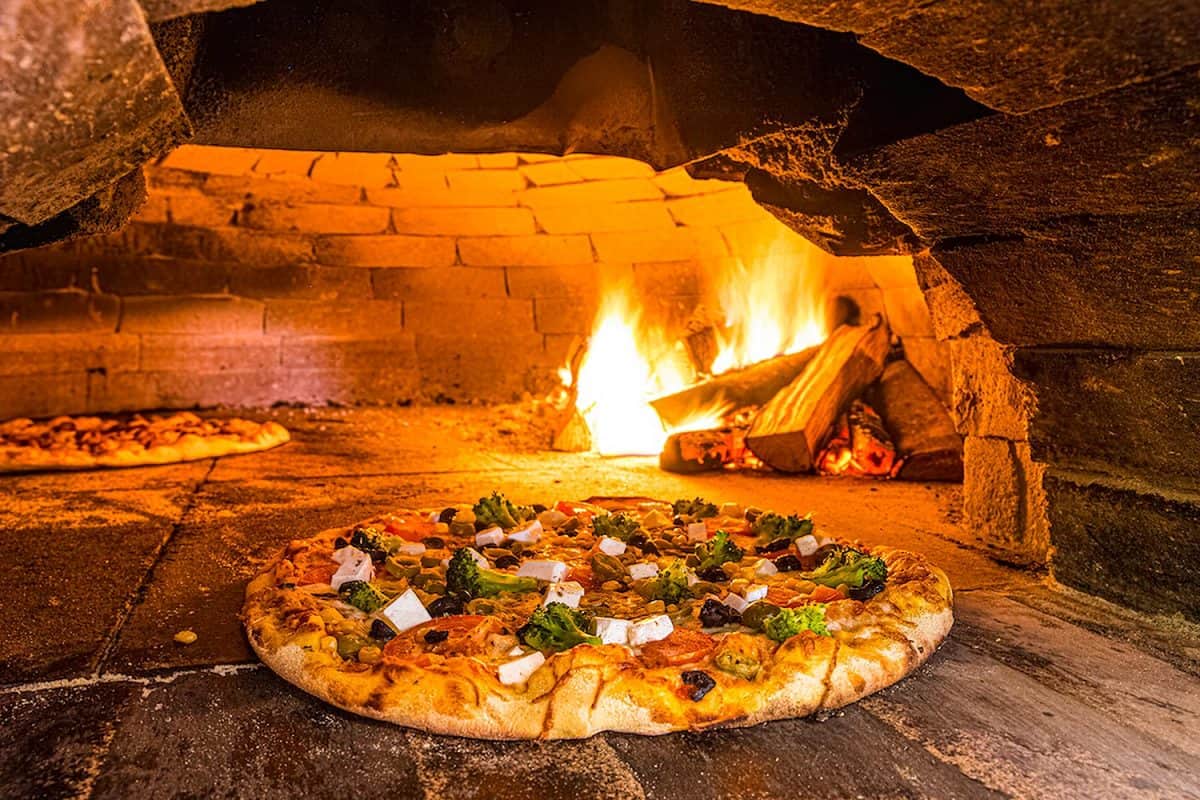
For these traditional pizzas, it's also best to cook the pizza on a pizza stone or steel. These go into the oven before preheating and take some time—30 minutes to an hour—to preheat. This helps your oven maintain the high heat, even as you open the door and put the pizza in.
Without a pizza stone or steel, you might not get as much oven spring from the crust, but you can still make a great pizza. Check out our article Do You Need To Grease A Pizza Tray? to learn more about the proper method for making pizza without the stone.
However, you may want to turn down the dial for different types of pizza. Deep-dish pizza is a lot thicker than traditional pizzas. If you cook it at the highest heat, the outside will burn before the inside cooks through. This deep-dish pizza recipe calls for using a 425º oven, but others may vary.
For different reasons, this principle also applies when making a frozen pizza. Because they're frozen, these pizzas can also burn on the outside before they're cooked through. Follow the temperature guide on the box, but most will call for 350-425º F.
You can learn more about this topic in this article: How Hot Should A Pizza Oven Be?
Why is pizza cooked at such a high temperature?
Traditional pizza recipes call for extreme heat and will push your oven to its limit. This blazing heat is essential to getting a great crust.
Whether New York style or Neopolitan, traditional pizza crusts are thin beneath the toppings and puffy at the edge. To accomplish this, you need heat to get into the pizza dough quickly. This causes the gasses in the dough to expand, springing up the outer crust and toasting the bottom of the crust to crispy perfection.
What happens if you cook pizza at a lower temperature?
We've seen that high temperatures are the secret to an amazing, crispy-yet-fluffy crust. Too low of a temperature and the crust will dry out before it can properly expand. This yields a dry, tough crust that, while still edible, is far from pizza perfection.
It can also cause your crust to remain pale by the time the rest of the pizza is cooked. This difference isn't merely cosmetic.
The golden-brown and dark spots on typical pizza crust contain a deep, rich flavor, and without them, your crust may taste bland and boring. This is thanks to a process called the Maillard reaction.
The Maillard reaction is a chemical reaction that happens under high heat. This not only causes the food in question to turn brown but also creates new compounds that improve the aroma and flavor of your meal. This is why the brown bits are always the best.
Without this volcanic heat, your pizza crust may become dry and hard before the Maillard reaction can work its culinary magic.
How do you know when a pizza is done?
While great pizza is close to heaven on earth, underdone pizza is little more than a disappointment. Fortunately, it's easy to check that your pizza has finished cooking so you can avoid such a disaster.
When checking a pizza for doneness, you want to look in two places: the top and the bottom.
The top is quite easy to check. Simply take a peek and look for browning on the crust and the cheese, especially any cheese in the center of the pizza. If there are brown spots on the crust and cheese, the top of the pizza is done.
Checking the bottom of the pizza requires an extra step, but is still very easily done.
Simply use a spatula or a pizza peel to tip up the pizza and check the bottom crust. Once again, look for golden brown spots through to the center. If those have appeared, the bottom is done. If top and bottom both look good, your pizza is ready!
With deep dish pizza, it's just about impossible to check the bottom crust visually. Instead, you can use a kitchen thermometer. Stick the thermometer into the center of the pizza, pushing through until it reaches the bottom crust. If the temperature is 190º F or higher, it's done!
How do you know if your pizza is undercooked?
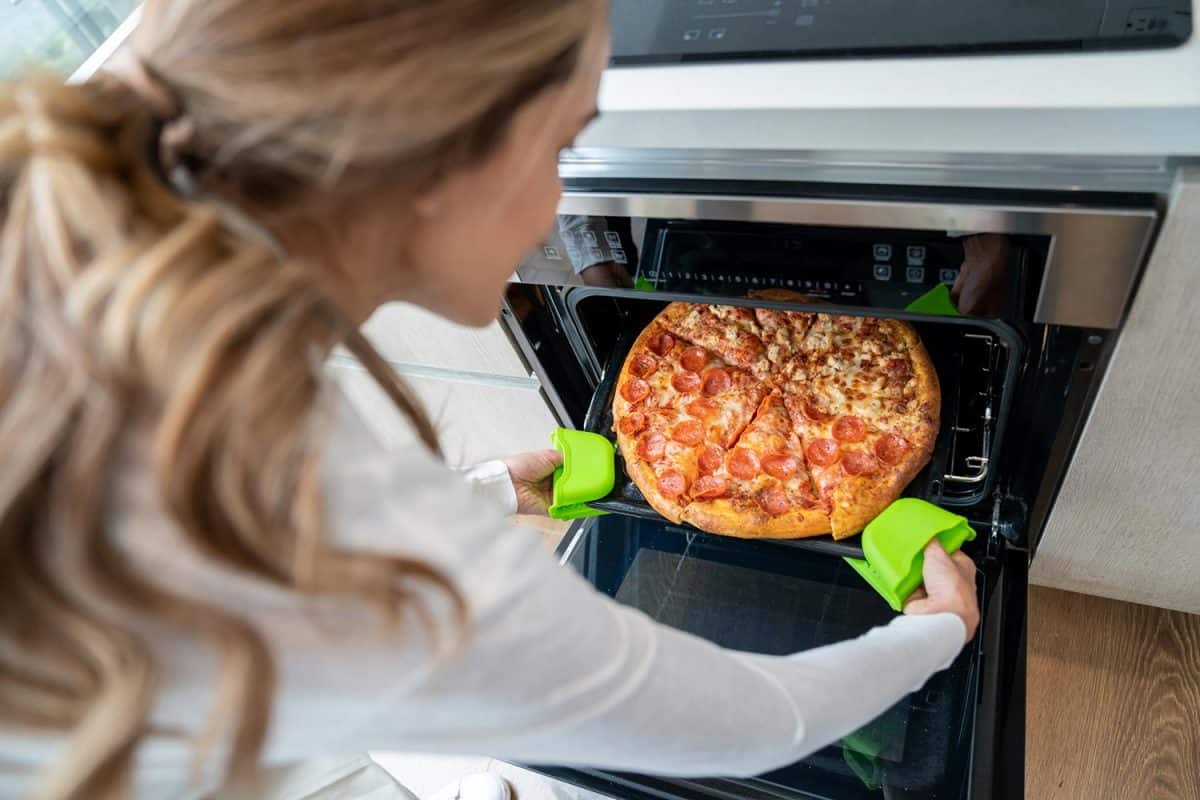
If the top or bottom of the pizza still looks pale or doughy, you know the pizza needs a little longer. Continue to check the pizza until it reaches the desired brownness. Keep a close eye on it, as pizza can go from underdone to burnt in a hurry at these high temperatures.
What to do if just the top of the pizza is underdone
There may be times when the bottom of your pizza looks perfect, but the top is still a bit pale. In this case, you can move the pizza to the top rack and switch on the broiler setting. The broiler uses intense heat, so this should only take a couple of minutes. Monitor your pizza closely to avoid burning it.
Many oven broilers have hot and cold spots, so you may find that you need to rotate it if it's cooking unevenly.
What to do if just the bottom of the pizza is underdone
There are a couple of options to fix pizza with a soggy bottom.
If you have a large enough pan, you can finish cooking the pizza on the stove. Preheat a large skillet on the stove at medium-high heat with no fat or oil. Once the skillet is hot, transfer the pizza. Continue to check the bottom of the crust every minute or two for doneness.
Most pizzas are larger than even the biggest skillets, though. In this case, lower the oven temperature to 350º and move the pizza to the lowest rack. The radiant heat from the bottom of the oven should help finish off the cust. Check it after three minutes for doneness.
Final Thoughts
With pizza, as with many things in life, timing is essential. Now you know more about getting the timing right for different styles of pizza. We've also seen how to check pizzas and even how to fix them when they're unevenly cooked.
All that's left to do is find the right time for your next pizza. Happy cooking and bon appétit!

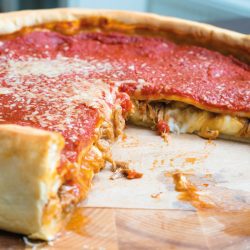
![Pizza boxes stack isolated on white - How Big Is A Pizza Box [By Brand]](https://kitchenseer.com/wp-content/uploads/2022/04/Pizza-boxes-stack-isolated-on-white-250x250.jpg)



